#greek gold coin
Photo
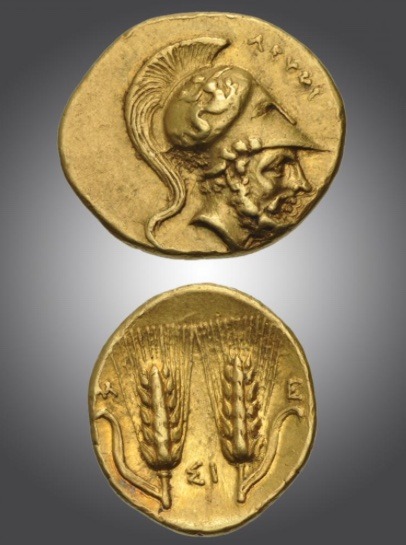
Greek Coin - Gold Third-Stater from Metapontion in Lucania
C. 280-279 BC
Ø 1.5 cm.
Obverse: the bearded Leukippos wearing a crested Corinthian helmet adorned with a scylla hurling stone ΛEYKIΠΠ[OΣ] above. Reverse : two six-grained barley ears with ΣI in between. Gold third-stater from Metapontion in Lucania. Struck for Pyrhos of Epeiros.
#Greek Coin - Gold Third-Stater from Metapontion in Lucania#C. 280-279 BC#gold#gold coin#greek gold coin#collectable coin#treasure#ancient artifacts#archeology#archeolgst#history#history news#ancient history#ancient civilizations#ancient greece#greek history#greek art
169 notes
·
View notes
Photo
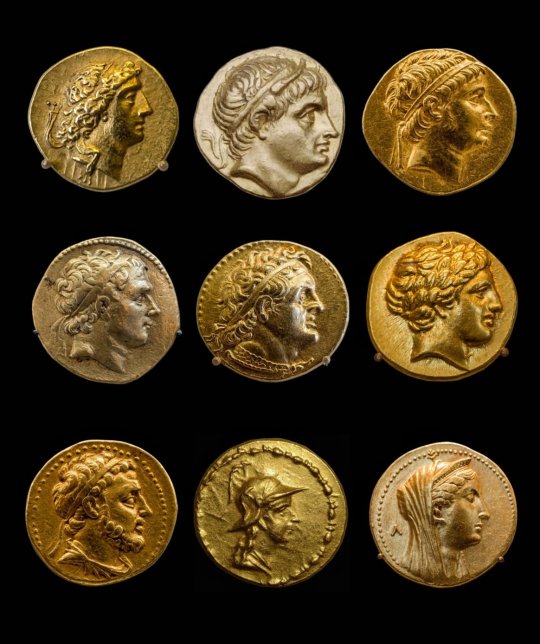
Ancient Greek gold coinage.
Hellenistic Kings and Queens ruled an area from Greece in the west till India in the east.
From left to right:
1) King Asandros, Kingdom of Bosporos/Pontos (Black Sea region), 36 BC
2) King Demetrius I Poliorketes, Kingdom of Macedonia, 3rd BC
3) Seleukos II, Seleucid Empire, 3rd BC
4) Antiochos III o Megas (the Great), Seleucid Empire, 3rd-2nd BC
5) King Ptolemaios II, Kingdom of Egypt, 3rd BC
6) King Alexandros IV (the young Prince/Son of Alexander the Great), Kingdom of Macedonia, 323-315 BC
7) King Achaios (usurpator), Seleucid Empire, 220-213 BC
8) King Menander I Soter, Kingdom of Indo-Greeks (appr. modern Afghanistan -parts of India), 165-130 BC
9) Queen Arsinoe II, Kingdom of Egypt, 283-246 BC.
#art#design#coin#gold#style#history#greek#king#queen#hellenistic#king asandros#king demetrius#seleukos II#achaios#arsinoe#alexandros IV#macedonia#seleucid#ptolemaios#menander I#india#afghanistan#egypt#archeology
276 notes
·
View notes
Text

#greek mythology#medusa worship#medusa diety#medusa aesthetic#medusa#gold#gold coins#ancient greece#ancient greek mythology
0 notes
Text
Why the Greek Gods Died Off
According to the ancient Greeks, you tried hard to make your way the underworld, Hades. Hades was not as fun as life on Earth, but still much better than wandering the Earth forever as invisible and restless spirit. So you started your afterlife journey to Hades. Soon, you arrived at the river Styx. It was too wide and cold to swim. And really how man yancient Greeks new how to swim?
So, your…

View On WordPress
#Achilles#apocalyptic#Athena#Charon#Chef Paul#chocolate coin#coin#Comic Chef#cookbook#gold#Greek gods#Greek mythology#Hades#Poseidon#recipes#ripoff#Styx#underworld#Zeus
0 notes
Note
Hi :D Logic behind the latest batch of cutie marks? if you feel like sharing :)
Hello everypony ^-^ It is cuie mark info dump again ^-^
Before we start, reminder that Grian + Tango do not have cutie marks because they are a hippogriff and a Kirin respectively. Non-pony creatures do not have cutie marks :)
Now that we've got that out of the way, let's get started!
Mumbo's Cutie Mark

I'm the proudest of this one because it'd simple but affective.
Mumbo's cutie mark is a tangled-up red wire which has been cut at the ends to expose the conductors. The wire is also particularly made to create an 'M' shape.
Similar to Impulse's cutie mark, Mumbo's is related to electricity for his investment in redstone. Electricity being the closest thing to it. That said, I gave Mumbo a wire because it is the baseline of all electricity. It connects everything together. From the power source and into whatever little machine or contraption you've built, wires are needed to keep it all powered! So I thought using it as a cutie mark would work really well for Mumbo. Sometimes he can just bring people together just like a wire does for electricity.
(And the little knot in the wire is just a little something to indicate Mumbo may be a bit of a mess)
Additionally, with the wire being in the shape of an 'M' it could stand for Mumbo while also being in the shape of a mustache too :)
Scar's Cutie Mark
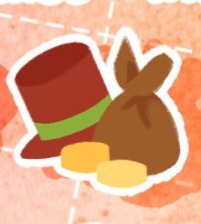
Capitalism baby! Scar's cutie mark is of a red top hat next to a bag of bits (the currency in my little pony is called bits and are essentially gold coins).
At heart, Scar is a swindler. He's full of joy and whimsy sure, but he has a real talent for selling little trinkets to anypony who takes a look at his store front. In my head, Scar is essentially the flim and flam of this AU. He's a wandering salespony who shows up from time to time with things to sell from all across Equestria! That's where the little bag can be interpreted as a bag of coins, or a bag full of mystery items he's collected over the years.
Also, the top hat is there to represent Scar's salespony flair.
Joel's Cutie Mark
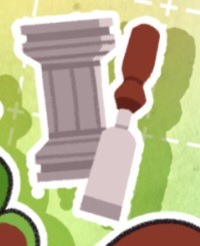
Joel's cutie mark is of a greek stone pillar and a chisel.
There are a couple of meanings to this one. The first one is pretty obvious, Joel loves to build! He's a fantastic builder with an eye for design. So I chose a greek pillar to represent one of my favourite builds of his, Stratos! But of course, a simple pillar can be used for lots of things and that's where the second meaning comes in. To hold things up! Joel holds himself up to on pretty high pedestal. He's very full of himself and I honestly can't blame him. Joel is great! So of course I had to represent his ego in his cutie mark somehow.
Jimmy's Cutie Mark

Jimmy's cutie mark is of a little canary bird. Another cutie mark with two meanings behind it!
First, is the obvious one. The canary in the coal mine. Misfortune will fall upon the canary to indicate to others that the journey may be too dangerous to continue. A bad luck charm if you will or a bad omen. And that's the surface meaning of his cutie mark that everypony knows it for. Jimmy is the poor clumsy pony in town who always seems to hurt himself before things go wrong.
However, there is a second meaning. Canary birds are also supposed to happiness and harmony. This is the main core of the cutie mark which gets over looked. Despite the bad implications of his cutie mark, it does not stop Jimmy from spreading joy wherever he goes. He's kind and joyous, keeping a positive attitude no matter what.
(I of course have a Ranchers plot point where Tango says this to Jimmy to cheer him up about his cutie mark one day. Tango, who has never had a cutie mark and does not understand their importance, says he doesn't see Jimmy as bad luck, but instead feels joy when Jimmy smiles no matter the situation. But that's a story for another day 🤭)
565 notes
·
View notes
Text
Lunari Heritage in Zaun
This is gonna be a reach, but from the little we've seen of Vi and Jinx's mom and younger Silco, I'd guess they were both from the same ethnic group.


In a place like Zaun, where the people are left with scraps, any piece of jewelry sticks out. Vi's mom and Silco are both wearing similar pieces of jewelry. Silco's bracelet could likely be fitted as a necklace since it twice wraps over his wrist. Neither are wearing anything of high quality, but the necklace and bracelet in their respective pictures seem decently maintained if not worn. That's when I thought, these are probably heirlooms.

In fact they looked pretty similar too, but in smaller scale of the princess's own pendants. I wouldn't bring this up if it weren't for the fact that Piltovans prioritize elaborate art-deco aesthetics, the more elaborately geometric the better (Councilor Shoola). So you would assume even the simplest jewelry would be a square pendant or a straight line. But no, big plain circles, and then I remembered we saw that before, on the princess Ambessa killed. Big bronze circles.

And when we look at young Vi , you notice that she's wearing jewelry too. A simple necklace with a green (it looks green) gem. And I realized that the princess's necklace was also adorned green gems.

I'm pulling from scraps, but it's interesting that small things these Zaunites have to adorn themselves (though not for long with the time skips) are similar versions if not simpler version's of the princess's.

At first I thought this meant that many of the cast were actually of Ionian descent. But then in the Princess's scene a thought kept coming back to me, "Why is Mel wearing purple?". Mel, a skilled diplomat from a young age, typically wears the main colors of the nations she hosts and is hosted by. White for Piltover, Black for Noxus (Ambessa), and always with her signature accents of gold. So if Mel followed her mother to Ionia ,where green is a culturally significant color, why purple? It's because Mel and Ambessa weren't in Ionia, they were in Targon fighting the Lunari.


The Lunari are Rakkor tribal people in the Targonian region who worship the moon, and are persecuted for it by the Solari, the religious order that worships the sun. While technically Mt. Targon is influenced by Mt. Olympus and Greek mythology aesthetic, that's more the case for the Solari. Overtime the Lunari aesthetic has been mixed it's originally nomadic culture with East Asian influences. The prominent colors of the Lunari happen to be turquoise, silver, black and purple. It was such a little thing to remember but it made me see connections I hadn't thought about.
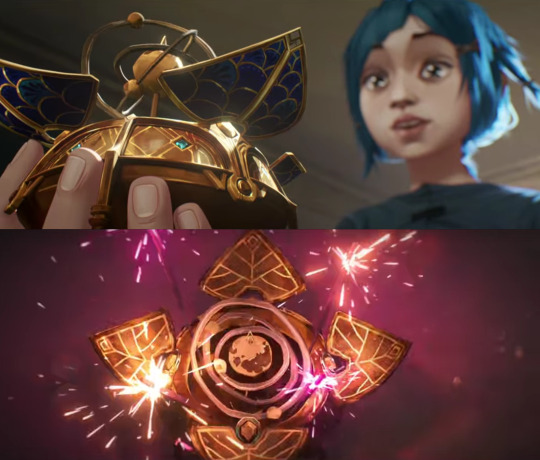
Suddenly everything starts to connect. The bronze coins represent the 3 moons that exist in Arcane's Runeterra. How do we know there are 3 moons, because the Valdiani piece Jinx stole was depicting their planet. In the Valdiani there are 3 orbits circling the Earth, meaning 3 moons (or satelites). Now the engraving on the gold of the princess's necklace makes sense, because it's supposed to resemble the gates at the peak of Mt. Targon. The pendant itself is shaped like the mountain with the gates fitted at the top.


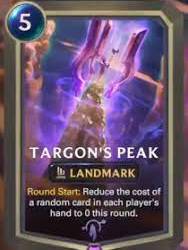
Frankly, it works for the Princess to have been Lunari and waves of descendants of the Lunari to arrive in Piltover and end up in Zaun. In Arcane, Piltover was created as a safe haven to escape the Rune Wars 200 years from the start of the show. Even after the Rune Wars ended the shipping port has likely seen waves of migrant labor and refugees from the ongoing crisis that occur in Runeterra (*cough*Noxus*cough*). It's likely that many of the current generation of Zaunites are of mixed heritage of the various fleeing people's.
It creates a whole new dynamic of the ways in which Piltover's laws, their Ethos, strips the people of Zaun from their identity and reducing them to tools for the mines. Magic is inherently a part of religious ceremonies and religion in general in Runeterra, especially for the Lunari. How do you practice your religion in a place that has banned the means by which it's conducted? There must have been more people like the Lunari who didn't have a problem with their magic, their problem was that they were being persecuted.
The remnants of family keepsakes brought over as communities fled were clung to as best as possible especially as they had to let go of part their spiritual identity. But even that doesn't seem to have lasted either. Vi doesn't keep her necklace, her mother is dead, so lost is her necklace, and we never see Silco wear his bracelet. They could have been stolen, or at best, hidden for safe keeping, maybe Enforcers get suspicious at the hint of mysticism and suddenly they want to talk.
Finally, maybe a little less related, it is interesting how prominent Piltovans and Zaunites take on day and night aspects. The sun shines over Piltover at their best, begins to set at times of uncertainty. While in the cover of night with moon above, the strongest Zaunites strike hardest. One more thing, it is interesting how Arcane's Jinx has taken on darker tones of purple rather than stick with neon pink. I always have to go back and look at a reference to remember that her pants are purple-er than I recall.
Update: I wanted to include that the large doodle Jinx made on her cup actually looks similar to the Lunari's sigil. And the sigil remains on the cup into the timeskip, also the center moon is made smaller within the crescent like in the necklace. I also noticed Jinx's cup later has more violent bomb imagery around it.



#arcane#lunari#zaun#silco#vi arcane#jinx arcane#mel medarda#there's a lot to think about#for everyone including mel#piltover#arcane theory#arcane meta#arcane speculation
697 notes
·
View notes
Text

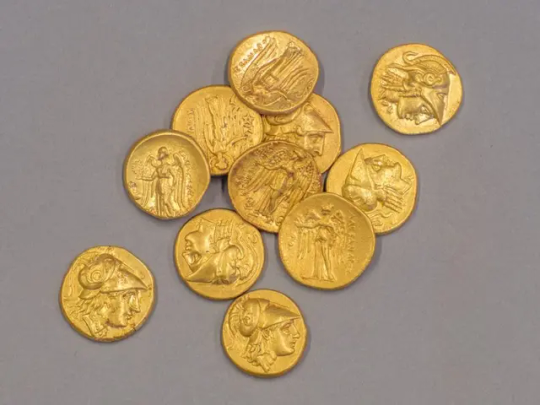
A collection of Greek gold and silver coins, including 11 gold staters bearing the portrait of Alexander the Great, uncovered in Crete in 2024. Dated to the 4th-3rd century BC
279 notes
·
View notes
Text

The Greek underworld, or House of Hades, is generally described in Homer’s Iliad as a gloomy place of “the mists and the darkness” (Lattimore) where the spirits heroes and villains alike come to rest. Hermes as Psychopomp (Spirit guide), would lead the new spirits down into the land of the dead. Souls would first drink at the River Acheron (river of sorrow) or sometimes mentioned as the River Styx (to specifically forget their past pains), then they would be ferried across by the boatman Charon for a coin placed within their mouths or upon their eyes. Souls would drink from the River Lethe (river of forgetfulness) to forget all memories of their previous lives, then pass through the gates guarded by Cerberus, the hound of Hades before being presented before Hades, and his wife Persephone. The other two rivers of the underworld are the River Phlegethon (river of fire) and the River Cocytus (river of wailing) both associated with punishment.
The Souls would then be judged by three demi gods: Minos (son of Zeus and Europa), Rhadamanthus, (son of Zeus and Europa), and Aeacus, (son of Zeus and Aegina.) and would choose a final place for each soul amongst the following locations:
the Asphodal meadows, (asphodal is a white lily associated with death), is where ordinary souls were forgotten, wandering in monotony amongst misty darkness. The Elysian fields, also known as Elysium, is described as a paradise where the honored heroes go to live in white houses amongst fields of gold, ripe fruit, and temperate weather. Tartarus is a realm residing a vast distance below Hades, and is a place of cruel, eternal punishment that, according to Hesiod, even Zeus feared. Here the defeated Titans were held, imprisoned in chains, as well as mortals who committed crimes against the gods, like Sisyphus, Tantalus, and Ixion. In addition, the Erinyes, (or Furies), the three goddess of blood retribution and punishers of criminals were said to inhabit this dreaded realm.
If you share this image I'll pass you a golden ticket to the Elysian fields! Xoxo
Support my book kickstarter "Lockett Illustrated: Greek Gods and Heroes" coming in early 2024.
#pagan#hellenism#greek mythology#tagamemnon#mythology tag#percyjackson#dark academia#greek#greekmyths#classical literature#percy jackon and the olympians#pjo#homer#iliad#classics#mythologyart#art#artists on tumblr#odyssey#literature#ancientworld#ancienthistory#ancient civilizations#ancientgreece#olympians#greekgods#agamemnon#troy#trojanwar
319 notes
·
View notes
Text
FORBIDDEN FRUIT

Chapter One. Midsummers Masterlist
Pairing: God! Simon ‘Ghost’ Riley x Female Reader
Prompt: A prophecy written long ago stated of a human that would become the God’s wife and live in his domain for the rest of eternity.
A/n: This series is heavily influenced by Hades and Persephone, while I will not exactly state if this is Greek Mythology, I want to add lots of folklore and myths into this series! So let me know if you like it so far!
“Daughter!” The chilling voice of your mother startled you from your book, the passage had managed to suck you in and away from your current reality. Oh how you wished you could stay there.
It was Midsummer, a time of the year that you truly despised.
It met you had to be under the watching eye of your mother, who searched far and low for a suitor for you.
She was the chieftess of your clan, something she made sure to remind you of every waking hour. To put it simply, you were a trainee, a soldier, in her quest of power.
You were not her daughter, but a pawn.
“I’m coming, Mother.” You announced as you carefully put the bookmark down against the paper, hoping you’d return to the pages sooner rather than later.
You left your room reluctantly, taking a glance at the setting sun outside of the window. It was nearly nightfall already, which meant it was time to leave.
“Oh Gods, look at you! Did you fall asleep?” Your mother bounced around you, yanking the uncomfortable corset tighter around your waist and pulling your hair away from your ears to make you look more sophisticated and older.
“I was just reading.” You mumbled, hands gripping the flowing train of your dress, specifically tailored for the Midsummer feast. The color was a crimson red, fading into a soft blush as it reached your ankles– it was the color of your clan.
“You should have been cleaning up, I’ve got three potential suitors coming to visit tonight. You need to be on your best behavior.”
“Yes ma’am.” You sighed, eyes watering at the thought of losing your freedom to a man twice your age. Clans around you didn’t have suitors your age, so it was likely you were to be married off to a man full grown, who would force you to have heirs. It was enough to make you shudder.
A loud caw shook you from your thoughts. Your eyes travelled to the window, where a large crow sat perched upon the sill, it’s beady eyes glancing at you as it always had. It was common to find the bird near you. Something your mother detested, which made it much more interestingto have the crow return to you. You’d read that offering the bird trinkets or food was a way to build trust. So in the springtime at dusk you’d set coins and seeds out for the crow.
It would return with its own gifts, so much more extravagant than the ones you’d given. Golden brooches, silver earrings, and necklaces of stunning ruby; one that you wore on your neck now.
“Shoo!” Your mother cried, as she attempted to smack the bird out of the sill and into the night, and reluctantly the bird left, not without bringing its beady eyes to you first. With a flap, it flew into the night.
“Damn that bird, it’s a wonder people don’t think of you as a witch.”
Sometimes you wished you were one.
It was later in the evening when you saw the bird again. He didn’t make a loud caw as he usually did, instead he perched on the rafters of the pavilion, beady eyes flashing against the gold goblets and lanterns being paraded around.
“Madam-”
You jumped, not noticing the looming presence behind you until he spoke. You wheeled around with a hand upon your chest, startled.
“I did not mean to startle you…” he started.
“No sir, it’s quite alright. It seems I was only lost in my mind.” You brushed off, instead searching over his features. He was old, at least older than you, with a clean shaven face and head, and violent eyes that swirled in the light. It seemed to come as a great effort to keep his rage at bay.
“Hershel Shepherd.” He introduced, holding a large hand out to you. Hesitantly you placed your palm in his hand, his grip tight and uncomfortable. You bit back a wince, faintly hearing the crow caw indifferently.
You turned to the bird slightly, instead catching your mother’s stern stare, she vaguely made a gesture to the man that had spoke to you.
A suitor.
He was so old.
With a gulp, you turned back to the man known as Shepherd, plastering a fake smile upon your lips. With careful words you introduced yourself, watching as his eyes fired again at the greeting. Was that flames?
“Care to dance?”
As if your mother would allow you to say no.
You looped your hand in his, settling the other gracefully on his shoulder, just as you were taught.
“I’m surprised someone hasn’t swooped to marry you yet.” His tone made the hairs on the back of your neck stand. There was something off about this man, and it made your throat tighten in wary.
“All the suitors say I’m too strong-minded.”
“An easy fix. You just need some discipline.”
You stopped dancing, feeling how tight his grip was upon your waist and hand. It hurt, but you didn’t want to let him know that.
“Excuse me?” You asked incredulously, now actually seeing the flames burn in his irises.
“I think you’ve heard perfectly clear, little bird. I plan to propose to you this fortnight. I already have your mother’s blessing.”
The crow cawed loudly.
You felt like puking.
“If you’ll excuse me.” You squeaked, hating how shaky your legs felt as you forcibly ripped his hands from your body. Your heels clicked upon the marble, your dress whisking in the nightly summer breeze. Dodging through people, you made your way to the opposite side of the pavilion, trying to calm your nerves as much as you could.
“What the hell was that?” The irritated voice of your mother made you shrink down in stance, even though you were several inches taller.
“He disrespected me, I wasn’t going to stand by and let him insult me.” Your voice was uncharacteristically small– you blamed it on Shepherd.
“You will let him do as he pleases.” She snapped through gritted teeth. Your mouth opened slightly in shock, never before had she been so bluntly angered. It made frustrated tears well into your eyes.
“I won’t marry him.”
“That’s not your decision. It’s the clan’s, and they’ve already concluded their vote. You’re to be married at dawn. Betrothed.”
“No…” you whimpered, now wishing more than anything that you could run far away. Possibly sailing the seas by your lonesome, or climbing trees in the jungles, or hiking mountains larger than the skyline.
“Yes. Now go catch some air, gather yourself and come back a woman. Not some whimpering child.” With a small shove, she pushed you out of the pavilion and into the dark night.
With a cloudy brain, you began to walk down the stone path to the gardens, far from any lingering people. Here, the only sound was the croaking of frogs, scent of flowers, and singing of crickets.
As if a string was cut, your eyes began to water, tears falling freely down your cheeks in hot trails. Hastily, you wiped the droplets, approaching the briar of winter roses. The petals bloomed full year, having the resilience you only yearned of having.
Your fingertips brushed over the soft petals, hardly taking note to the small fluttering of wings upon the top of the briar, until the bird cooed as it fluttered down to your eye-line.
“At least I’ll have you, huh?”
You felt ridiculous talking to a crow, but the bird was the only one that did not shun you. It gave you time to be yourself, without protesting and interference.
With a hesitant hand, you reached for the bird, gently enough for it to know you didn’t mean any harm. When it made no move to fly away you brushed a hand to its feathers, watching with amusement as it cawed softly, before playfully nipping your finger.
“I wish I could fly away with you.” You whispered into the night air. Not noticing the man hidden in the shadows, watching on with a curious spark in his eye.
Finally. You were here.
“Then why don’t you.” His deep voice cut through the balmy night.
Chapter Two
#cod#call of duty modern warfare#modern warfare#simon ghost riley#simon riley#ghost#mythology au#god!ghost#simon riley x reader#Simon ghost riley x reader#Simon riley x you
1K notes
·
View notes
Text

José Segrelles - Caronte. Canto II de la Divina Comedia (ca. 1929)
Segrelles’ output achieved great success, particularly his illustrations for stories, tales and fables.
With a restless and idealistic spirit, the painter instilled a sense of mysticism and symbolism into his compositions, drawing the reader into a fantastic and dream-like world that was the perfect accompaniment to the texts he illustrated. Strange actions, terrifying visions, torments, magical beings… in other words: exaltations of the imagination of an artist who, by inflaming the sublime, brings to mind the work of Johann Heinrich Füssli (1741—1825) and of the painter and poet William Blake (1757—1827).
This drawing is part of the series of eight watercolours Segrelles made to illustrate Dante’s Divine Comedy, a commission from the Araluce publishing house in the late 1920s. The quality of this body of work won him a Gold Medal at the 1929 Barcelona International Exposition.
The work in hand represents Charon, the Greek mythological character whose job was to ferry souls in his boat through the Marsh of Acheron to the underworld on the other side of the river of the dead. In payment, the souls had to give him one Obol, which is why it was the custom to put a coin in the mouth of the dead when burying them. Segrelles’ depiction of the ferryman is rather disquieting: an old man with big bulging eyes, his mouth half-open and a long white beard. His face brings to mind a phantasmagorical being, with eyes and gaping mouth reminiscent of that of a snake to provoke fear and anxiety. In short, a hybrid character, half way between a man and a strange being from the depths of the sea. (source)
94 notes
·
View notes
Photo

Greek Coin - Gold Octodrachm of Ptolemy IV
C. 221-205
Ø 2.8 cm.
Obverse: bust of a defied Ptolemy III Euergetes, wearing a radiate diadem and an aegis, trident. Reverse : ΠΤΟΛΕΜΑΙΟΥ ΒΑΣΙΛΕΩΣ.
Ptolemy III Euergetes (Greek: Πτολεμαῖος Εὐεργέτης, romanized: Ptolemaios Euergetes, "Ptolemy the Benefactor"; c. 280 – November/December 222 BC) was the third pharaoh of the Ptolemaic dynasty in Egypt from 246 to 222 BC. The Ptolemaic Kingdom reached the height of its military and economic power during his kingship, as initiated by his father Ptolemy II Philadelphus.
#Ptolemy III Euergetes#Greek Coin - Gold Octodrachm of Ptolemy IV#C. 221-205#gold#gold coin#greek gold coin#collectable coins#ancient artifacts#archeology#archeolgst#history#history news#ancient history#ancient culture#ancient civilizations#greek history#egyptian history
44 notes
·
View notes
Text
Ah, midsummer: when we’re getting deeper and deeper into the “ohhh, this is a classic horror novel” stage of Dracula Daily. With my historian hat on, I have just one observation to make about our June 25 entry.
The only thing I found was a great heap of gold in one corner—gold of all kinds, Roman, and British, and Austrian, and Hungarian, and Greek and Turkish money, covered with a film of dust, as though it had lain long in the ground.
Huh, you may be saying to yourselves, that seems like a random assortment of coins. Why Roman and then British and then all the others? Why these coinages, specifically?
Empires. They’re all empires. The British Empire saw itself very specifically as the successor to Rome in the scope of its power and learning (but also with the culture of Greece, because they were, they were convinced, cool like that.) So we have Rome, master of the ancient world as imagined by Victorians. We have Britain, master of the modern world ditto, and it must be said they had a point. Austria and Hungary were, at the time of Jonathan’s writing, a single empire, and had been since 1867, but this was a temporary state of affairs linking two powerful monarchies of East-Central Europe. Greece we’ve covered. And then there is “Turkish money,” the currency of the Ottoman Empire, masters of enormous swathes of Central Asia and Southeastern Europe from the 15th century onward.
And all of this money? All of this power? The “chains and ornaments,” still more obvious signifiers of power? All of this is much more relevant to how the Count lives than furniture. And it tells us not only about his past, but, by implication, about his future ambitions. Dun dun dunnnnnn.
#dracula daily#dracula#COFFIN REVEAL CHAPTER#i had forgotten how deeply creepy all of this is#and how clearly dracula wants to -- uh -- establish a vampire empire#apparently#bram stoker
2K notes
·
View notes
Text
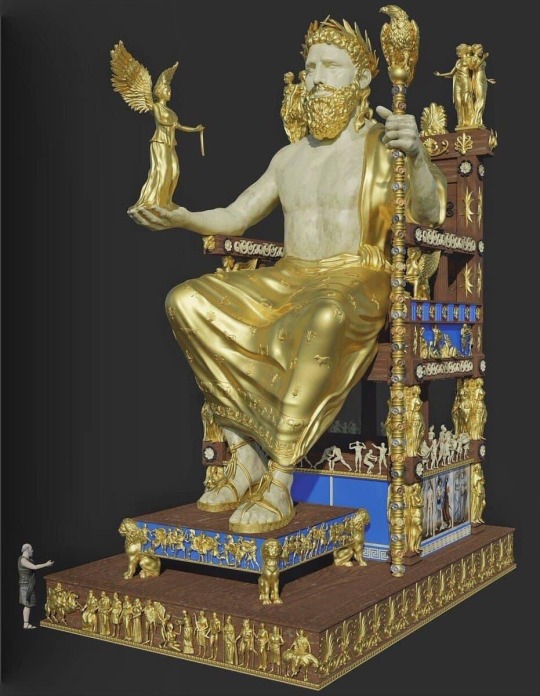
The monumental Statue of Zeus at Olympia in Greece was one of the Seven Wonders of the Ancient World. Created in the 430s BCE under the supervision of the master Greek sculptor Phidias, the huge ivory and gold statue was bigger even than that of Athena in the Parthenon. Worshipped by pilgrims from across the Mediterranean, the statue inspired countless imitations and defined the standard representation of Zeus in Greek and Roman art in sculpture, on coins, pottery, and gemstones. Lost in later Roman times following its removal to Constantinople, Phidias' masterpiece captivated the ancient world for 1,000 years and was the must-see sight for anyone who attended the ancient Olympic Games.
The statue of mighty Zeus was over 12.4 m (41 ft) high and represented the god seated on a throne. It was bigger even than Phidias' Athena Parthenos in Athens. The Zeus statue, like Athena, was chryselephantine, that is a combination of gold and ivory over a wooden core, with the god's skin (face, torso, arms and legs) being in ivory and his beard, robes, and staff rendered in brilliant gold, applied in hammered sheets. Fine details were picked out using a wide variety of materials: silver, copper, glass (for the decorative lilies of the god's robes), ebony, enamel, paint, and jewels. The clay moulds discovered in Phidias' workshop for a similar statue suggest that it was first erected there in pieces - the size of the workshop is exactly the same dimensions as the inner cella of the temple - and then reassembled at its final destination. The wooden core could not have been fully sculpted or the moulds would have been unnecessary to shape the outer gold pieces.
Zeus' throne - made using ivory, ebony, and gold, and encrusted with glass and gems - was embellished with relief sculpture depicting a wide range of figures from Greek mythology, many of which were considered the offspring of Zeus. There are the Graces (Charites), the Seasons (Horae), various Nikes, sphinxes, Amazons, and the children of Niobe. The screens between the legs of the throne were painted by Phidias' brother Panaenus (Panainos) and depicted the Labours of Hercules, Achilles with Penthesilea, Hippodamia with Sterope, Salamis, and scenes of Greece. The god rested his feet upon a footstool which was decorated with a battle scene involving Theseus fighting Amazons (Amazonomachy).
209 notes
·
View notes
Photo

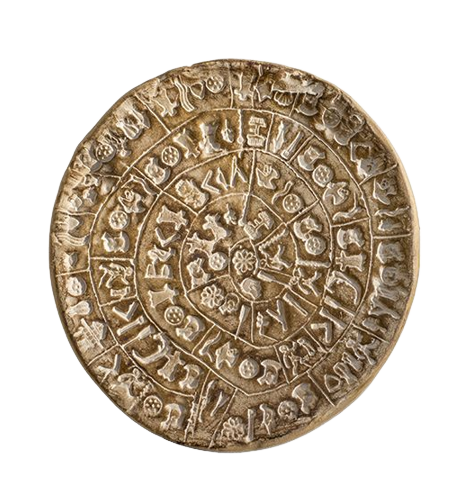
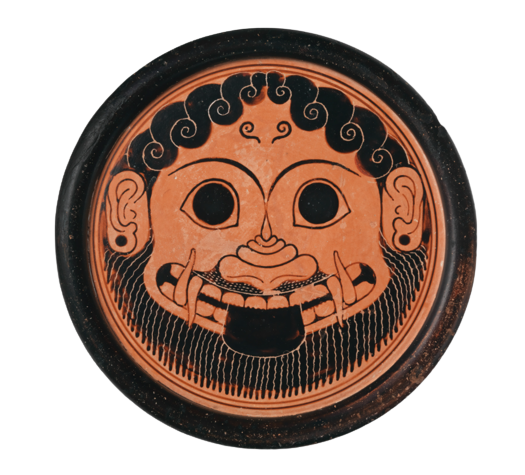
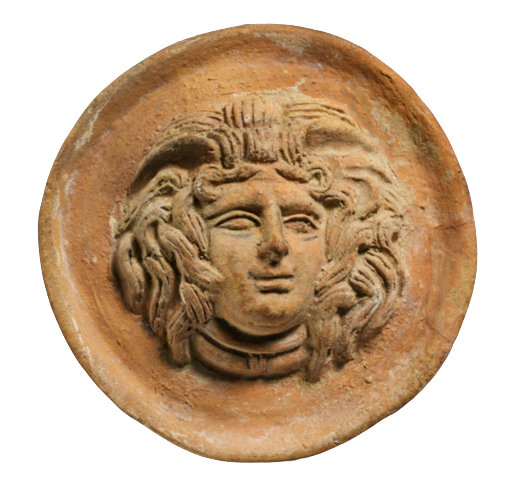

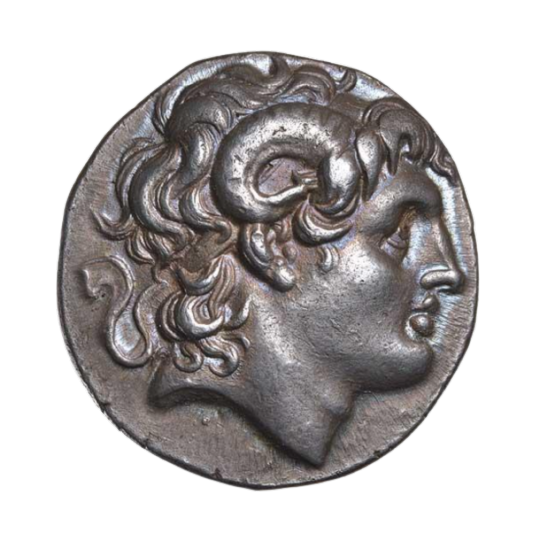

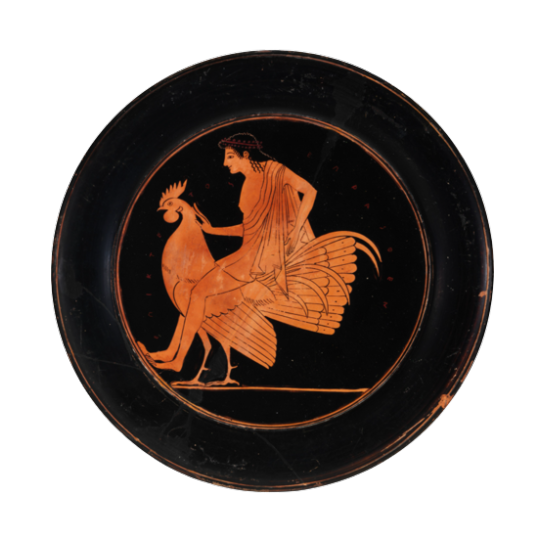

Ancient greek PNGs, part 2
(1. Bronze lid / 2. The Phaistos disc / 3. Terracotta stand with Gorgon / 4. Terracotta roundel with Medusa / 5. Gold ring with a siren / 6. Coin with Alexander the Great / 7. Coin with labyrinth / 8. Terracotta plate rooster / 9. Gold disc)
#request#png#pngs#transparent#artboard#moodboard#image board#polyvore#shoplook#sticker#stickers#ancient greece
634 notes
·
View notes
Text
Intro to Alchemy - Coin's Notes
This is a quick primer on Alchemy, what it is, where it came from, and how it’s used today taken straight from my notes. This will likely be a series of posts as the topic of Alchemy is vast despite it being somewhat difficult to find resources on!


What is Alchemy?
Alchemy is sort of like magical chemistry but with some spirituality added to it, to put it vaguely. It likely has its roots in ancient Egypt but spread almost everywhere and is still used today—more on that later. Sadly over time, we’ve lost a lot of alchemical knowledge what little knowledge we do have has been reimagined in a more romanticist way, causing a lot of what was known to be skewed.
The mysterious nature of alchemy is not just in this lack of knowledge, but the texts we do have are often riddled with codewords, called decknamen, that can make the text difficult to read unless decoded. Why? Think of these books as containing "trade secrets", you don't want to share those around all willy-nilly!
Famous alchemists that you may know are Isaac Newton, Paracelsus, and Agrippa, though there are many more exemplary alchemists that you can find here.
Etymology
The modern word alchemy is a bit of a mystery itself --as it comes from the Arabic word al-kīmiyā (the al- being the Arabic definite article “the”), but the origin of ladder half, -chemy, is unknown.
There is speculation that -chemy comes from the Late Greek khēmía means "land of black earth”, an old name for Egypt. Or possibly from the Greek khymatos meaning "that which is poured out”. (EtymologyOnline)
Another likely candidate is the greek cheo meaning "to melt or fuse" (L. M. Principe).
Transmutation; Lead to Gold
One goal of alchemy, the transmutation of base substances into gold—termed chrysopoeia—is possibly the most widely known to the average person. We know now that it’s impossible to transmute base substances into gold by chemical means, but not impossible by other means (scientists turn bismuth into gold using a particle accelerator). Different alchemists had their own ideas as to how to do this but of course, none of them succeeded.
That’s not to say alchemy as a whole is a failure, alchemists through the ages have made some of the most important inventions or discoveries to this day and we know of alchemy as a predecessor of modern chemistry.
The Great Work; Magnum Opus
More than just a creator’s largest or most famous piece of work, the Magnum Opus—a.k.a The Great Work—is an alchemical term for the process of working with the prima materia ("first matter”) to create the Philosopher's stone (wiki).
The Great Work of Alchemy is often described as a series of four stages represented by colors:
nigredo, a blackening or melanosis
albedo, a whitening or leucosis
citrinitas, a yellowing or xanthosis
rubedo, a reddening, purpling, or iosis
These were later expanded upon and eventually came to 12 steps/processes. The order of these steps would vary by alchemist.
Calcination
Solution, or Dissolution
Separation
conjunction
Putrefication
Congelation
Cibation
Sublimation
Fermentation
Exaltation
Multiplication
Projection
Philosopher’s Stone and Immortality
It is a common misconception that the purpose of the Philosopher’s Stone was to give infinite life, it was just meant to prolong one’s life. It was also thought to cure disease and transmute base substances into gold.
Seeking immortality is noted more in Chinese "alchemy", it's proper names being Waidan 外丹 (External Alchemy) and Neidan 內丹 (Internal Alchemy) [Pregadio].
Alchemy in a Modern Context
From my understanding, there are as many approaches to alchemy as there have been alchemists, but in attempts to make this easier let's give it some labels: there are two paths when studying modern alchemy, though these labels are loose as these paths are not mutually exclusive. The two paths are a spiritual path and a traditional path. These are not set-in-stone labels or definitions, and if either interests you then I suggest looking into them more on your own time, there are links and resources at the end of the post to get you started!
Traditional Alchemy
Some folks try to reconstruct alchemical formulas, or even make their own, either out of curiosity or as an attempt to revive the lost art. This approach takes a more reconstructionist perspective and leans closer to chemistry than psychology. That being said, alchemy was not solely empirical and there are almost always going to be spiritual aspects involved.
Spiritual Alchemy
Sometimes when alchemy is used in a modern context you’ll see it talked about in a more spiritual or psychological way. The approaches of alchemy from a spiritual perspective will vary by person, just as the scientific approaches will vary by person.
I won’t go too much into it here, but essentially spiritual alchemy is the idea that alchemical texts are spiritual or philosophical, and thus interpret them as such; practitioners of spiritual alchemy decode the texts from a psychology-based perspective and rarely, if ever, do they involve chemicals or substances in the way traditional alchemy does.
This path is usually focused on self-transformation (or self-transmutation) and doesn’t necessarily use a body of chemical knowledge to practice.
What Now?
Ok so you know the bare bones about what alchemy is and a few of its uses, so what now? Well, you could either wait until my next "coin's notes" post and see what I talk about then, or you can check out the "References and Further Reading" section and get started on your own research journey!

Enjoy my posts? Consider leaving me a tip on my ko-fi!~
References and Further Reading
Esoterica - Alchemy (playlist)
Livescience - What is Alchemy?
Sacred-texts - Alchemy (subject)
Alchemy Rediscovered and Restored by Archibald Cockren (via Sacred-texts)
Alchemy Restored by Lawrence M. Principe
The Secrets of Alchemy by Lawrence M. Principe
Victorian Alchemy: Science, Magic, and Ancient Egypt by Eleanor Dobson (via Jstor)
306 notes
·
View notes
Text
marigolds

It's October! For half the hemisphere, the nights are getting longer, the wind is getting colder and the weather is taking on a distinct grey and overcast mood. What better time than now to steal a few last bursts of brilliant, warm sunshine and keep them close against the coming of winter?
Enter October's flower (one of them) - the marigold.
An interesting thing I found while researching this month's flower was that its native to the Americas - and yet some sites list the ancient Greeks and Romans having traditions surrounding the marigold. One of the sites even mentions the flower being introduced to the 'Americas' several sentences after telling me its native to Mexico. I think some of the confusion may come from the fact that there are marigolds of the Tagetes genus, which are the ones I think of when I think of marigolds, that were first mentioned by the Aztecs and are native to the Americas - and there is a flower, Calendula officinalis, called the 'pot marigold' which comes from the same daisy family but is a different genus and seems to originate in southern Europe. To add to the confusion, the Spanish imported the Tagetes marigold from the Americas and from Spain it spread to, particularly, monastery gardens across Europe where it was cultivated into various strains with names like the African or French marigold. The American marigold didn't even have an official genus name until 1753. So, sorting through marigold myths was a lot like playing 'guess which twin it is' for me especially since the majority of the sites I was wandering through either weren't aware of a difference or didn't differentiate. I found one site that marked the difference between them (shout out to growingvale.com). I can understand why. We're only talking flower folklore here, not nuclear codes. My little nitpicky soul though just wasn't happy until it figured out what was going on. I am now going to spew facts at you and try to tell you which flower is which for each of them.
We'll see how I do.
Let's start at the beginning.
Tagetes marigolds were first recorded as being cultivated by the Aztecs, who considered them both medicinal and sacred. That tradition has carried over into Mexico's el Día de los Muertos, the Day of the Dead, which is celebrated either in late October or Early November depending on the region. How much of that is straight from the Aztecs and how much is later European influence via Catholicism is still up for debate but the marigold plays a special part in both. The brightness and strong scent of the marigold flowers are believed to help guide the spirits of the dead to their family and to the offerings left out for them. You watched Disney's Coco (or Fox's The Book of Life), you get it. The Day of the Dead is celebrated outside of Mexico as well, with traditions varying from place to place but right now, we're talking marigolds.
In a half step to the side of that, the Victorians also considered marigolds a funeral flower but in a solemn and grief-filled way that made their cheery color inappropriate for any other kind of bouquet.
In South Asia, the Tagetes marigold has in large part replaced Calendula officinalis marigold while still serving the same purpose. There marigolds are used to create garlands and decorations for weddings, festivals and sacred holidays. Both Buddhism and Hinduism attach spiritual significance to the flowers. In India, giving a garland of marigolds to someone is considered a sign of friendship.
Walking it back to our Calendula officinalis marigold, the common name of 'marigold' is actually a break down of 'Mary's gold'. The golden colored plant was often left on alters and shrines to the Virgin Mary in Catholic countries in the middle ages by people that couldn't afford to leave actual coins. Its bright sunshine color and availability to everyone soon became associated with her.
This is the marigold that the ancient Romans and Greeks used medicinally and that medieval Europe thought was a cure against the plague. This is also the marigold that was woven into garlands for doors and livestock in Ireland to keep away fairy attention.
Both branches of flowers are popular with love superstitions, representing never having to lose a love and as a good luck charm when it comes to love.
And let's round things off with a gardening fact. Marigold are considered excellent companion plants for most vegetable gardens because they repel pests from the big to the very tiny kind. Just check before you plant. Their roots also give off an antibacterial chemical that will wreck havoc on your legumes.
Happy birthday, October babies!

#marigold#marigolds#folklore#superstition#cottagecore#herbalism#herbology#october#birth flower#day of the dead#dia de los muertos#dia de muertos#right up there with#dandelions#as a sunshine flower#flowers#language of flowers#meaning of flowers
58 notes
·
View notes